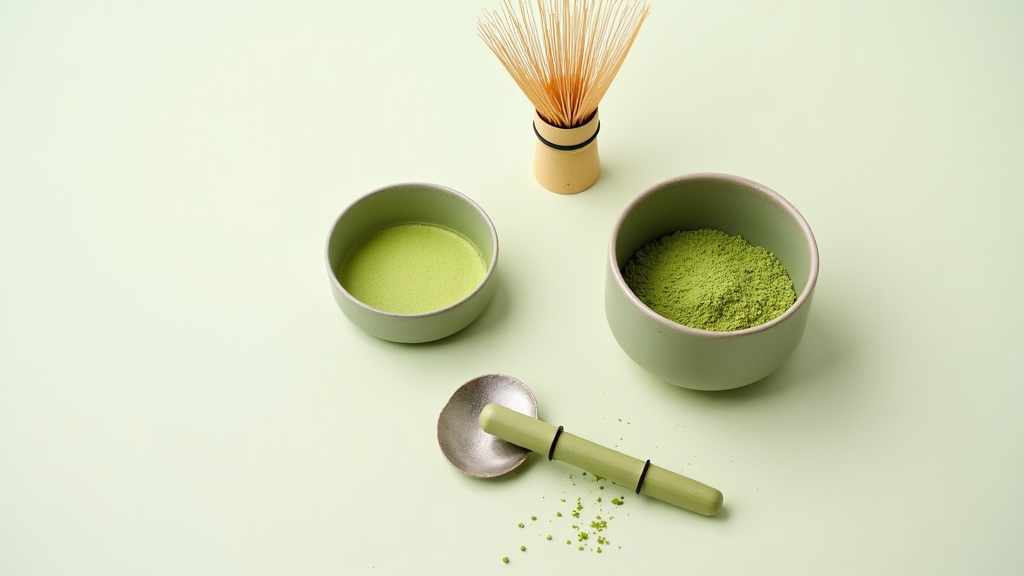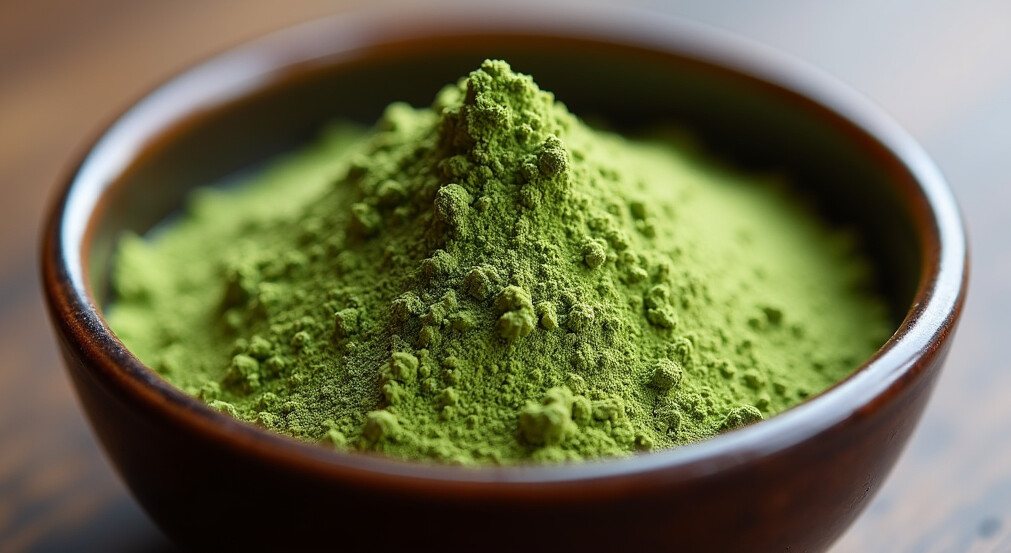
So, what’s the real story behind the green powder that’s taken the world by storm? Matcha has gone from being a ceremonial drink steeped in ancient tradition to a modern-day wellness phenomenon.
You’ve likely seen it in lattes, smoothies, or Instagram feeds, but matcha is far more than just a green trend. Beneath its frothy surface lies a rich history, a carefully crafted ritual, and a treasure trove of health benefits that continue to captivate tea lovers worldwide.
This guide will peel back the layers of matcha, unveiling not just its vibrant color and bold flavor, but the centuries-old practices and powerful benefits that make it much more than just a “green buzz.” Ready to dive deeper?
Let’s Explore.
The Origins of Matcha
Matcha’s journey began over a thousand years ago in China before finding its true home in Japan. During the Tang Dynasty in China, powdered tea was created by grinding tea leaves into a fine powder.
This method was adopted by Zen Buddhist monks in Japan, who found that drinking matcha helped them stay alert during long meditation sessions. The unique preparation method caught on and became an integral part of Japanese tea ceremonies, symbolizing peace, respect, and mindfulness.
In Japan, the cultivation and preparation of matcha have been refined over centuries. The tea leaves are carefully grown under shade to increase chlorophyll production, creating the vibrant green hue.
After harvest, the leaves are steamed, dried, and ground using traditional stone mills, which helps preserve the flavor and nutritional content.
What Makes Matcha Unique?
Unlike other teas, matcha involves consuming the entire tea leaf in powdered form, making it a nutrient powerhouse.
The leaves used for matcha are grown in the shade, which boosts chlorophyll content and enhances the amino acid, L-theanine, responsible for its calming effect. The stone-grinding process produces a fine, silky powder that dissolves easily in water, creating a frothy, creamy texture.
The taste of matcha is complex yet balanced—vegetal, slightly sweet, and mildly bitter. This unique flavor profile sets it apart from other teas and makes it an acquired taste that many find comforting.
Whether you enjoy it straight, mixed with milk, or in a smoothie, matcha offers versatility in both flavor and preparation.
Unlocking the Health Benefits of Matcha
Matcha is celebrated not only for its distinctive flavor but also for its potential health benefits.
Some of the advantages matcha offers include:
- Antioxidant Boost: Packed with catechins (especially EGCG), matcha is a potent antioxidant that helps fight oxidative stress and protect your cells. It’s like giving your body a green shield!
- Sustained, Jitter-Free Energy: Need a pick-me-up without the crash? Matcha delivers a smooth energy boost that lasts, thanks to the dynamic duo of caffeine and L-theanine. No jitters, just focus.
- Metabolism Magic: Matcha’s catechins help increase fat burning, making it a natural ally for your metabolism and weight management goals. A little green help in your fitness journey!
- Brain Power: Matcha’s unique combination of caffeine and L-theanine enhances mental clarity, focus, and memory. Whether you’re powering through work or preparing for a meeting, it sharpens your mind like a high-performance engine.
- Heart Health Hero: The antioxidants in matcha help lower cholesterol and protect your heart from oxidative damage. Sip to show your heart some love!
- A Mindful Moment: There’s something zen about the ritual of preparing and sipping matcha. It’s the perfect way to pause, recharge, and reconnect with the present moment.
Brewing the Perfect Cup of Matcha
The process of making matcha is an art form in itself. Here’s a simple guide to brewing the perfect cup:
- Sift the Matcha: Start by sifting 1-2 teaspoons of matcha powder into a bowl to remove any clumps and ensure a smooth drink.
- Heat the Water: Heat water to about 175°F (80°C)—avoid boiling water, as it can scorch the delicate powder and make the tea bitter.
- Whisk the Matcha: Add about 2 ounces of warm water to the sifted matcha and whisk it using a bamboo whisk (called a chasen) in a quick “W” or “M” motion until it becomes frothy and smooth.
- Add More Water: Once you’ve achieved the desired froth, add additional water to taste, usually about 4-6 ounces, depending on how strong you like your matcha.
- Enjoy: Sip your matcha slowly, appreciating the rich color, aroma, and flavor.
You can adjust the strength of your matcha by varying the amount of powder or water used. If you prefer a richer, thicker consistency, you can use more matcha powder, which is known as “koicha” (the thicker style), while “usucha” is a lighter, more diluted version.

Boosting Your Matcha Experience with Accessories
If you’re looking to upgrade your matcha experience, here are some great tools that I personally recommend:
- Bamboo Whisk (Chasen): A traditional whisk that helps create the characteristic frothy texture. Look for one with at least 80 tines for the best results.
- Matcha Bowl (Chawan): A deep, wide bowl allows for easier whisking and helps you appreciate the vibrant green color of the matcha.
- Matcha Scoop (Chashaku): A bamboo scoop helps you measure the perfect amount of matcha powder, usually one scoop per serving.
- Matcha Sifter: A sifter ensures a smooth texture by removing clumps before whisking.
Investing in these tools not only improves the quality of your matcha but also connects you with centuries of tea traditions.
Fun Matcha Facts: Did You Know?
- Matcha in Space: In 2011 Japan’s space agency, JAXA, grew matcha in space as part of an experiment to see how the plants would fare in zero gravity.
- Samurai’s Secret: Samurai warriors drank matcha before battle for its focus-enhancing properties, giving them both calm and energy for combat.
- Matcha’s Superpowers: Matcha is loaded with antioxidants—specifically, it contains up to 137 times more antioxidants than regular green tea, helping to reduce inflammation and improve health.
- Buddhist Tradition: Zen monks drank matcha to stay alert during meditation, a practice that continues in modern-day tea ceremonies.
Where My Matcha Journey Began
My very first cup of matcha was at my dear sister’s place, out on her sun-drenched terrace one slow, golden afternoon. She was so excited to make it for me—pulling out all the tools like a total pro, whisking it up with this calm confidence like she’d been doing tea ceremonies in a past life.
The moment was peak serenity—birds chirping, a gentle breeze drifting through, and this vibrant green drink warming my hands. We sat there quietly, sipping in sync, like two pretend monks on a mindfulness retreat.
That first sip? Earthy, a little grassy, slightly sweet—and totally grounding. It wasn’t just a drink; it felt like a ritual. Something about it stuck.
Now, every time I make matcha, I’m right back on that terrace—feeling calm, connected, and just a little more present. It’s my little green pause button in a busy world.

Choose Quality Matcha
The quality of matcha depends on the cultivation methods, region of origin, and processing techniques. High-quality matcha is typically vibrant green, finely ground, and has a smooth texture. It also has a sweet, umami flavor with little bitterness.
When selecting matcha, consider the following:
- Ceremonial vs. Culinary Grade: Ceremonial grade matcha is the highest quality and meant for traditional preparation. Culinary grade matcha, while lower in quality, is ideal for use in cooking and baking.
- Origin: The best matcha comes from Japan, particularly from regions like Uji and Nishio, where the growing conditions are ideal for producing top-tier tea.
- Freshness: Look for matcha that has been stored in a sealed, airtight container to preserve its vibrant color and flavor. The freshest matcha will have the most intense taste and nutritional value.
Beyond the Cup: Other Ways to Enjoy Matcha
While a warm, frothy bowl of matcha is the classic way to enjoy it, this green wonder is surprisingly versatile. From smoothies and energy bites to pancakes, face masks, and even salad dressings—matcha’s vibrant flavor and powerful nutrients are finding their way into all kinds of creations.
Want to get creative with your matcha? Keep an eye out for my upcoming guide on fun, unexpected ways to use matcha in your daily life—[link coming soon!]
In the meantime, check out my Easter-inspired matcha post for some unique ideas like green tea desserts and festive drinks.
Final Thoughts: Why Matcha Belongs in Your Routine
Matcha is like a calm hug for your brain and a pep talk for your body. Packed with antioxidants, gentle energy, and centuries of tradition, this little green powder pulls way more weight than its cute frothy surface suggests.
Whether you’re a green tea nerd, a curious newbie, or just trying to feel less like a coffee-fueled tornado, matcha might just be your new daily ritual.
So go on—whisk it, sip it, vibe with it. Your future calm-yet-energized self will thank you.
This post contains affiliate links. If you make a purchase through these links, I may earn a commission at no extra cost to you.
